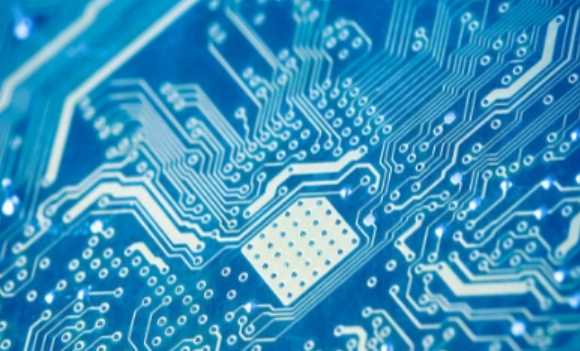
If two power layers of the same voltage source need to output high current, the circuit board should be distributed into two groups of power layers and grounding layers. In this case, an insulating layer is placed between each pair of power layer and ground layer. This gives us the desired two pairs of power busbars with equal impedances for equal currents. If the stack of power layers results in unequal impedance, the shunt will be uneven, the transient voltage will be much larger, and EMI will increase dramatically.
If there are multiple power supply voltages with different values on the circuit board, multiple power layers are required accordingly. Remember to create separate power layers and connections for each power supply. In both cases, keep in mind the manufacturer's requirements for balanced structure when determining the position of the paired power layer and ground layer on the board.
Since most of the circuit boards designed by engineers are traditional printed circuit boards with a thickness of 62mil and without blind or buried holes, the discussion of layering and stacking of circuit boards in this paper is limited to this. The layered scheme recommended in this paper may not be ideal for boards with large thickness differences. In addition, the fabrication process of circuit boards with blind holes or buried holes is different, so the layering method in this paper is not applicable.
In circuit board design, the thickness, through hole process and the number of layers of circuit board are not the key to solve the problem. Good layered stacking is the key to ensure the bypass and decoupling of the power busbar, to minimize the transient voltage on the power layer or ground, and to shield the electromagnetic field of the signal and power. Ideally, there should be an insulating layer between the signal routing layer and the loop grounding layer, and the spacing of the paired layers (or more than one pair) should be as small as possible. According to these basic concepts and principles, the circuit board can always be designed to meet the design requirements. Now that the rise time of IC is already short and will be shorter, the techniques discussed in this article are essential to solving EMI shielding problems.
The PCB routing density is increasing, so the PCB routing design is particularly important.

1. The power line layer of the four-layer board should be as close as possible to the ground line layer to obtain the minimum power impedance. From top to bottom, they are signal cables, ground cables, power cables, and signal cables. Considering electromagnetic compatibility, the six layer board from top to bottom is the best: signal wire, ground wire, signal wire, power cord, ground wire, signal wire;
2. The clock line should be adjacent to the ground line layer, and the line width should be increased as far as possible. The line width of each clock line should be the same;
3. High speed digital signal lines and low level analog signal lines are distributed in the signal layer adjacent to the ground wire, while low speed signal lines and high level analog signal lines are distributed in the far layer;
4, input and output wiring should be as far as possible to avoid adjacent parallel, to avoid feedback closing;
5, printed wire bend generally take 135 degrees obtuse Angle;
6. The wire width of power cord and ground wire should be increased as far as possible, and the wiring width of devices with 0.5mm foot spacing should not be less than 12mil;
7. General digital circuit signal line width is 8.il-10nul, spacing 6mi1-8mil;
8. The despoke capacitor lead can not be too long, especially the high-frequency bypass capacitor can not have a lead;
9, mixed signal circuit board on the digital and analog division, if the wiring across the division gap, electromagnetic radiation and signal interference will increase sharply, electromagnetic compatibility problems. Therefore, PCB design generally adopts unified, through the digital circuit and analog circuit zoning layout;
10, for some high-speed signals can use differential pair wiring, reduce electromagnetic radiation.
3 Test Examples
Here are some practical examples of disturbances caused by different causes and their practical solutions.
3.1 Interference Caused by power cables and ground Cables
The figure above is taken from a part of the external high voltage control and protection PCB circuit. (a) The original design circuit. Because the width of the printed wire of the power line and ground wire is too thin, the circuit is affected by external interference in the working situation; (b) is an improved circuit, whose power cord and ground wire are thickened to 5mm, which solves the interference problem of the circuit.
3.2 Interference caused by unreasonable component layout
The above picture is taken from part of the circuit of the magnetic field control and protection PCB of a radar transmitter. The improved PCB circuit (b) has a great improvement in anti-interference performance compared with the improved PCB circuit (a).
3.3 Interference caused by unreasonable wiring
The figure above is taken from part of the circuit of a radar CFA power control protection PCB. (a) The original design circuit. Because the high-voltage sampling signal line is placed in the closed-loop sampling loop during wiring, the closed-loop sampling circuit is susceptible to external interference during working, resulting in frequent false positive overvoltage failure. And (b) is the improved PCB circuit. Because it avoids the interference brought by the high-voltage sampling signal line, the improved PCB circuit works reliably and stably.
4 Conclusion
With the development of large-scale integrated circuit and super-large scale integrated circuit, the multilayer printed board (PCB) will be used more and more. In modern electronic systems, with the increase of clock frequency and chip integration, the rationality and reliability of PCB design are becoming more and more important. In the design, specific problems need to be analyzed in order to obtain high quality PCB design.







